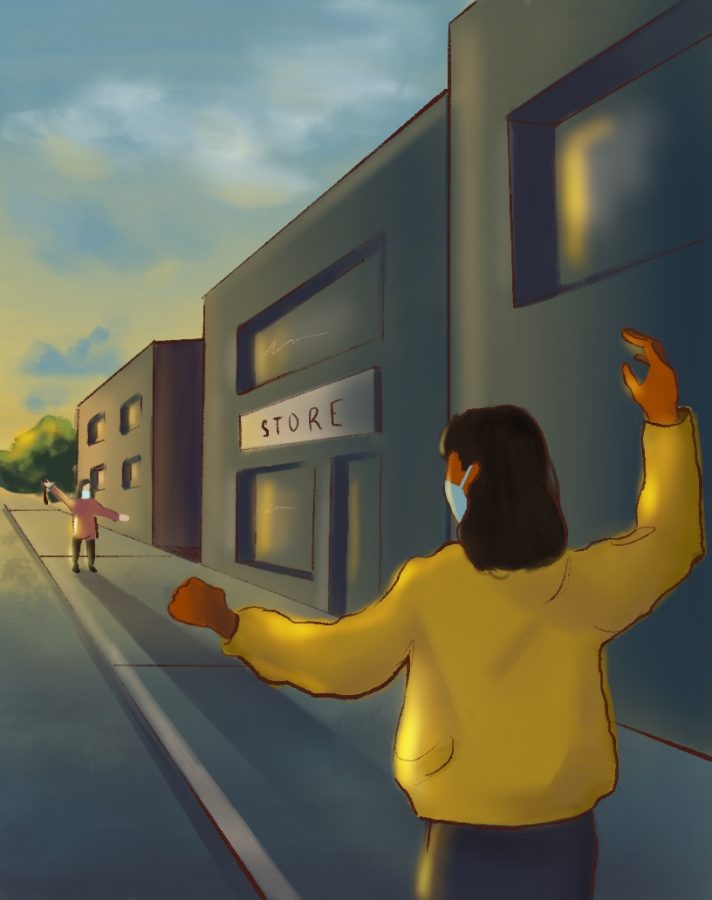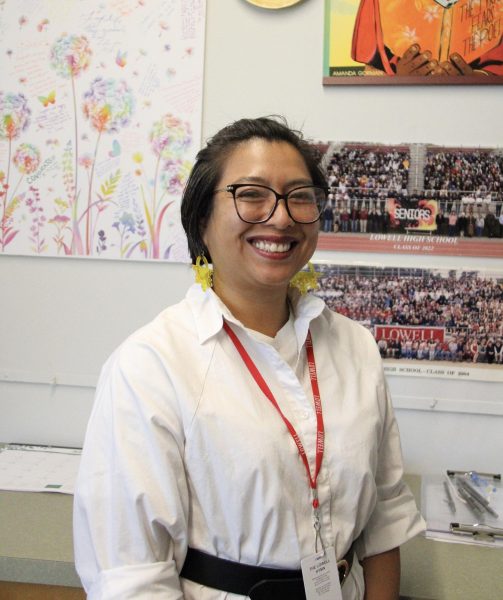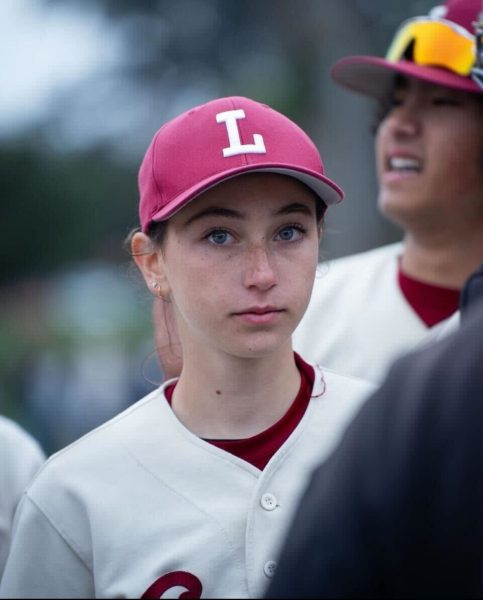Social connections amidst social distancing
Socializing while social distancing can be challenging.
As junior Demetra Bozionelos walked through the park, her mask tied tightly to her face, she made sure to avoid getting too close to any fellow city goers. Reaching her destination, she was excited to see her friend of ten years and had to repress the urge to hug her, settling instead for a heartfelt wave from a safe distance. Meetups with friends, an event that used to be filled with large gatherings and overnight shindigs, had quickly become infrequent and socially distant. Bozionelos, generally a gregarious and affable person, now finds herself more often than not in seclusion, adjusting to what has become the new normal.
Ironically, she’s not alone in this isolation.
This year, Lowell students have been attending school entirely from their own homes. Although it may be the safest alternative for continuing education, online school has deprived many students of social connections, creating the need to find new ways to maintain friendships while being mindful of city regulations.
High school, a place usually full of blooming friendships, has been reduced to Zoom calls and conversations over email. Without the interactive environment of in-person school, students have been robbed of the opportunity to develop new relationships with their classmates. “Everyone just has a black screen, and breakout rooms are utter silence,” Bozionelos said, laughing at the thought of trying to form friendships under these circumstances.
Even though socializing now comes with more obstacles, finding ways to interact with friends remains vital, especially when coping with the turmoil currently gripping the world. Social connectedness improves one’s wellbeing, so isolation can be harmful for adolescent mental health. While social distancing is a necessity when trying to prevent further spread of the pandemic, it can easily lead to loneliness, which increases stress and anxiety. Jonathan Fong, a counselor at Lowell, emphasizes this need for human connection. “It’s always great to find support and to relate to those who are going through the same difficult journey with you,” Fong said. “When you’re alone, you’ll have these downward spiral thoughts that can be a dangerous road to go down. You can’t go through this alone.”
So, how have adolescents maintained human connection while following COVID-prevention guidelines? In many ways, the pandemic has forced everyone to find new ways to be social. Sophomore Nicholas Chueng-Solow has met with friends in well-ventilated areas in order to follow the public health guidelines. “I’ve been hanging out with people in my open garage which is pretty chill,” he said. Others, like Bozionelos, are taking advantage of city parks, where one can often find small groups of friends sprawled across picnic blankets, keeping their distance while enjoying the fresh air. Others choose to partake in walks around their neighborhoods with friends, discovering various outdoor dining settings and naturesque locations.
“Sometimes my friends and I will sit on my roof, which we never really did before, or we’ll pick up food and walk to the beach,” Bozionelos said, agreeing with the importance of safely finding ways to socialize. Even when she’s not with her friends, Bozionzelos has found creative means to not feel so alone. “I’ve been going to the beach more often these days. It’s nice to bring a book and just be outside among other people, instead of cooped up in my room feeling isolated.”
Even with precautions, all physical interactions still carry some risks, so many people have chosen to interact online instead. Some students have taken to using Facetime from the safety of their homes. Additionally, Fong encourages students to join Lowell-facilitated clubs and communities of students to meet new people who share similar interests. The most widely used form of interaction, however, continues to be social media. Quarantine heightened online communication for people seeking to stay in touch with old acquaintances while being physically distant, with apps such as Instagram offering an easy vehicle to do so.
However, online interactions are not enough for some people, with some students choosing to disregard social distancing guidelines. While scrolling through social media, Bozionelos has grown used to seeing people she knows in large get-togethers. While the photos of teenagers hanging out in groups or indoor settings may look enjoyable, the health repercussions and the seriousness of the situation aren’t always reflected on social media. Bozionelos, while not feeling fulfilled with the limited amount of interaction she gets with her friends, doesn’t believe that having gatherings and parties is worth the risks. “We all want to see our friends, but you really have to ask yourself, is not being cautious worth it?” she said. “If everyone had been as safe as I was during quarantine, this may have been over by now, which is so frustrating.”
Fortunately, whether it’s planning an excursion in the great outdoors or just Facetiming close friends, there are many safe ways to interact and connect with one’s peers while preventing the spread of COVID-19. Socializing is an essential component of a person’s mental wellbeing, and though COVID restrictions have eliminated the shared environment of in-person school, Lowell students have managed to find ways to be there for one another. “We are geared to connect with others and build community,” Fong said. “We all really need support right now.”












